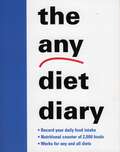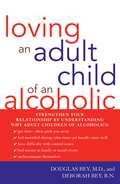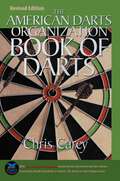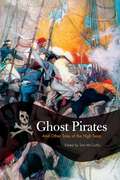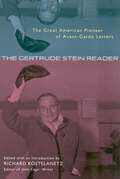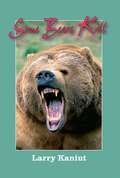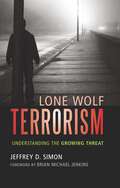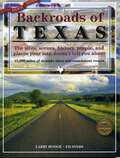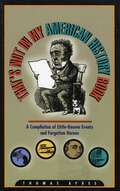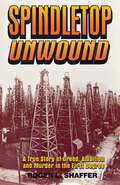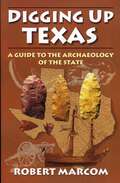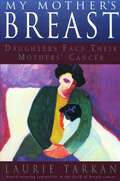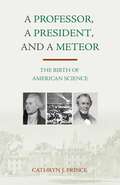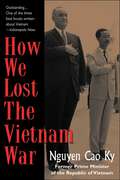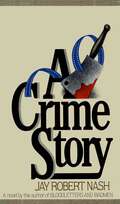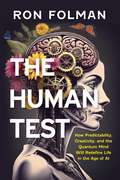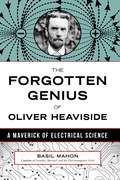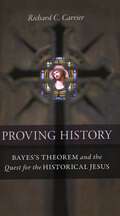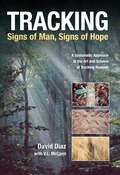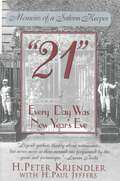- Table View
- List View
The Any Diet Diary: Count Your Way to Success
by Karlin GrayThe Any Diet Diary is designed to be an indispensable helpmate for anyone trying to change their eating habits.
Camper's Guide to Northern California: Parks, Lakes, Forests, and Beaches
by Mickey LittleFeaturing key campground features, facilities, and activities, this guide's 130+ maps take you right where you want to go. This is the most complete, map-packed, best-organized camping guide you can own.
Loving an Adult Child of an Alcoholic
by Douglas Bey M.D. Deborah Bey R.N.The child of an alcoholic develops patterns of behavior during childhood which carry over into adult life. As children they were taught to cover up the family secret and suppress their feelings. No matter what is going on, as adults, when asked how she or he is doing your partner will likely answer "fine." Distrust, fear of abandonment, and sensitivity to criticism are all major issues for your adult child. Recognizing these patterns and changing the ones that cause problems will help you and your partner enjoy a deeper relationship.
American Darts Organization Book of Darts, Updated and Revised
by Chris CareyThe American Darts Organization Book of Darts has been thoroughly updated and revised for the benefit of the growing ranks of dart players. Darts continues to be among the fastest-growing sports in the world, and this is the book to introduce anyone to the joys of the game. It is estimated that there are over ten million regular players in the United States alone. The American Darts Organization Book of Darts is your one convenient, clear source for buying darts, tips on play, and the rules of dozens of games. In addition, you&’ll learn the language of the sport (see glossary) as well as an introduction to websites of interest. This edition has been entirely rewritten and revised with new material throughout, including a new chapter, Tips from the Professionals, in which top-ranked professionals Stacy Bromberg and Steve Brown offer insights on their individual successes and sound advice on mechanics, equipment, and practice. For its size and price, this remarkably inclusive little book deserves a place next to every dartboard.
Ghost Pirates: And Other Tales Of The High Seas
Ghosts. Pirates. Put the two together and you&’ve got a winning combination of the most exciting stories ever written. It's enough to make anyone say, "Shiver me timbers"--with delight.The spirits of Davy Jones's locker have a long and colorful history among sailors and lovers of literature. From Daniel Defoe's "The Four Years Voyages of Capt. George Roberts" to Thomas Smollet's "The Adventures of Peregrine Pickle" to Washington Irving's "Adventures of the Black Fisherman," ghost pirates swashbuckle in and out of the scene, stealing the souls of the doomed and frightening the innocent. Prepare yourself for a thrilling ride.
The Gertrude Stein Reader: The Great American Pioneer of Avant-Garde Letters
by Richard KostelanetzThis anthology collects 51 of Stein's most experimental poems, stories, portraits, and plays.
Some Bears Kill: True-Life Tales of Terror
by Larry KainutNever before have so many exciting, hair-raising tales of bear encounters been collected into one book. Read about a man who swam into a lake to try to escape a furious bear only to find to his horror that bears can swim too! Or of the old gold prospector who got mauled and sewed up his own stomach--and lived to tell about it! When a bear attacks, it does so with devastating ferocity. Although the average attack lasts but thirty seconds, grievous injury can result from powerful paws and jaws. Strangely enough, most attacks are nonfatal. This book is filled with true-life episodes of close-calls, maulings, and deaths by all three North American bears: black, grizzly, and polar. These stories are not fiction. All are, eerily enough, based on complete fact. Even FOX TV&’s When Animals Attack uses Kaniut's material for its show. The author of two previous best-selling books on dangerous bears brings you a cliffhanger--you won't want to miss his latest and best yet!
Lone Wolf Terrorism: Understanding the Growing Threat
by Jeffrey D. SimonFrom Anders Breivik in Norway, who murdered scores of young people in a bombing and mass-shooting attack, to Omar Mateen, the Orlando killer who perpetrated the worst mass shooting in American history, lone wolves have demonstrated that they can be as dangerous as organized terrorist groups. Who are these terrorists and what can be done about them? An internationally renowned terrorism expert presents the first comprehensive treatment of this important issue. After delving into the diversity in motivations and backgrounds of lone wolf terrorists, Simon makes the following key points about this growing threat: lone wolves have proven to be more creative and dangerous than many terrorist groups; lone wolves are not just Islamist extremists but can be found among all types of political and religious ideologies; the Internet has provided the perfect breeding ground for isolated individuals with terrorist tendencies, but it may also prove to be their undoing; there are few women in this category, but this is likely to change in the coming years; and the common perception that nothing can be done about lone wolves is wrong. In fact, innovative strategies and policies can be developed to both prevent and respond to this type of terrorism. Drawing on his more than twenty-five years of experience studying terrorism, Simon has produced an insightful book that is essential reading for anyone concerned about the potential terrorist threats from violence-prone individuals in our midst.This paperback edition contains a new preface by the author, which reviews lone-wolf incidents since the publication of the original edition.
Backroads of Texas: The Sites, Scenes, History, People, and Places Your Map Doesn't Tell You About
by Larry Hodge Ed SyersThis new edition takes you off the major highways to discover the sights, scenes, history, and places that make the Lone Star State unique.
That's Not in My American History Book: A Compilation of Little-Known Events and Forgotten Heroes
by Thomas AyresHistory classes reduce America's story into a dry litany of dates, names, and places. That's Not in My American History Book tackles the messy details, reclaims disregarded heroes, and sets the record straight. This book explains why July 4th isn't really Independence Day, reveals 19th century mudslinging that labels Andrew Jackson a "murderer," and even unveils the only vice president with a number-one pop hit. With insight, wit, and irreverence, Ayres uncovers our overlooked past.
Spindletop unwound: A True Story of Greed, Ambition and Murder in the First Degree
by Roger L. ShafferWell documented by public records, actual court reports, and newspaper accounts, this book is a true story of greed, ambition and murder in the first degree.
Paintracking: Your Personal Guide to Living Well With Chronic Pain
by Deborah BarrettMillions of people suffer from debilitating chronic pain from arthritis, fibromyalgia, low back pain, chronic headache syndromes, neuropathies, or other painful conditions. People contending with chronic pain often spend considerable time, energy, and money searching for answers and visit multiple doctors, trying anything to find relief. When the source of pain is unclear or difficult to diagnose, their experiences are additionally frustrating, exhausting, and depressing. This book offers a hands-on approach to improving life with chronic pain, whatever the underlying cause. As a sociologist, psychotherapist, and someone with firsthand experience with chronic pain, the author understands the challenges that accompany pain and has devised realistic strategies to fare better. Paintracking provides a systematic method that empowers individuals to navigate the otherwise overwhelming array of treatment options and incorporate the effective ones into their lives for continued, incremental progress. Its cornerstone is a self-study tool that enables readers to improve. Readers are instructed on how to track and interpret their experience, whether using a pen and paper or the online tool offered as a companion to the book. By cultivating awareness of how their body responds in different situations and to different therapies, readers will become capable self-advocates, able to make informed choices. Written in clear, understandable prose and filled with sociological insights, therapeutic lessons, practical tips, and empathy, this book offers realistic hope to individuals who often feel hopeless in the face of confusing, debilitating pain.
A Birder's Guide to Maine
by Elizabeth PiersonFrom inland peaks and forests to the bold and rocky shore, Maine provides habitat for more than 400 species of birds--roughly half of the species that can be found in all of North America. That wealth of birdlife, coupled with spectacular scenery, has ranked the state high on many birders' lists, and few have observed its loons and puffins, owls and eagles, more thoroughly than Liz and Jan Pierson and Peter Vickery.The Piersons, who have been birding together for more than twenty years, coauthored A Birder's Guide to the Coast of Maine in 1981. Deciding it was time to revise and expand the scope of that book, the Piersons spent two years in the field doing research and enlisted the help of another longtime Maine birder - avian ecologist and author Peter Vickery. The result is this fascinating and comprehensive new guide, which covers both coastal and inland areas of the state.Want to see a Willet? Need a Green Heron to cap off a bird list? Salt marshes are the place to look. Where are the best spots to watch hawks? Try York's Mt. Agamenticus or Popham Beach State Park. Broken down by region - from the waters of Biddeford Pool to the mountains of Baxter State Park - this handy book offers birders an in-depth look at the birds characteristic to the various ecosystems found in Maine. It also provides a timetable for birding as well as easy-to-follow directions to the best sites. An invaluable resource, A Birder's Guide to Maine deserves a spot next to the binoculars in any birder's backpack.
Digging Up Texas: A Guide to the Archaeology of the State
by Robert MarcomTake a guided tour of more than 15,000 years of life in TexasMr. Marcom has authored a volume that makes the incredibly diverse archaeological record of Texas accessible to interested laypersons and beginning avocational archaeologists.
My Mother's Breast: Daughters Face Their Mothers' Cancer
by Laurie TarkanFocusing on the unique psychological needs of women who must deal with the pain and devastation of a mother's breast cancer while repressing their fears for their own health, Tarkan profiles a wide range of women who have witnessed the effects of breast cancer.
Professor, A President, and A Meteor: The Birth of American Science
by Cathryn J. PrinceWhen a fiery meteor crash in 1807 lit up the dark early-morning sky in Weston, Connecticut, it did more than startle the few farmers in the sleepy village. More importantly, it sparked the curiosity of Benjamin Silliman, a young chemistry professor at nearby Yale College. His rigorous investigation of the incident started a chain of events that eventually brought the once-low standing of American science to sudden international prominence. And, by coincidence, the event also embroiled Silliman in politics, pitting him against no less an adversary than President Thomas Jefferson. Based on a wealth of original source documents and interiews with current experts in history, astronomy, and geology, this journalist tells the remarkable story of Benjamin Silliman, arguably America's first bonafide scientist. In a lively narrative rich with fascinating historical detail, the author documents the primitive state of American science at the time; Silliman's careful analysis of the meteor samples; and the publication of his conclusions, which contradicted both popular superstitions regarding meteors as ominous portents and a common belief that meteors come from volcanic eruptions on the moon. She also describes Silliman's struggles to build a chemistry department at Yale with rudimentary material; new insights into geology that resulted from his analysis of the meteor; and his report to the prestigious French Academy, which raised the prestige of American science. Finally, she discusses the political turbulence of the time, which Silliman could not escape, and how the meteor event was used to drive a wedge between New England and Jefferson. This is a fascinating vignette of Federal Period America when science on this continent was still in its infancy, but was just beginning to make its mark.
How We Lost the Vietnam War
by Nguyen Cao KyNguyen Cao Ky served as South Vietnam's prime minister and its vice president during the years of the Vietnam War's escalation, and of subsequent criticism of the war from the U. S. His memoir provides an insider's look at the disputes and corruption within the government of South Vietnam and the diplomatic struggles with the U. S. during this time. Ky, who was also a military pilot and held the rank of marshal, gives insight into the South Vietnamese military as well, criticizing inaccurate reporting on the war and drawing attention to stories that journalists avoided. Assessing the U. S. ambassadors Bunker and Martin and the role played by foreign aid, Nguyen paint an eye-opening picture of how American politics and elections had a profound effect upon U. S. allies.
Bringing Home the Laundry: Effective Parenting for College and Beyond
by Brody JanisBringing Home the Laundry combines a psychologist's advice with the stories and insights of parents and their college-aged kids. It reassures you that your child's departure for college does not sever family ties, but can mark the beginning of a deeply satisfying, exciting new phase in your parent-child relationship.
A Crime Story
by Jay Robert NashThe crime takes place late one night in the mansion of Illinois Governor-elect Maitland Ashmore. His only son, Day, is bludgeoned to death, gruesomely slaughtered in his own bed. This is a textbook murder—no witnesses, no apparent motives, not a single clue. Or so it seems. This is a crime only a sharp, calculating mind could have planned. And only a true student of crime can solve.Jack Journey is that student. Author of a syndicated crime column, he is intimately familiar with all the famous crimes of the past. But when Governor Ashmore asks him to act as press liaison on the case, Journey is thrust into the middle of an all-too-real crime of the present. Soon it is clear that Journey must do more than simply record the facts of this case in his column. He must find the killer in order to protect his own life.Intricately plotted and paced, A Crime Story takes us through a thrilling maze of twists and turns. Jay Robert Nash has created a world where there is danger in even the most innocent encounter, mystery behind every closed door. Rarely has an author lent such convincing authenticity to a novel of mystery and suspense.
Human Test: How Predictability, Creativity, and the Quantum Mind will Redefine Life in the Age of AI
by Ron FolmanDiscover how artificial intelligence will challenge everything we believe about consciousness, free will, creativity, and what makes us truly human. In an era when AI will soon predict our breakfast choices, shopping habits, and romantic attractions with uncanny accuracy, quantum physicist Ron Folman poses a provocative question: If we&’re this predictable, are we truly conscious beings with free will or simply sophisticated machines? Drawing from quantum physics, cognitive science, philosophy, and rising technologies, The Human Test explores how the rise of AI and Big Data is forcing us to confront uncomfortable truths about human nature. As technology evolves to predict our behavior with increasing precision, Folman challenges us to reconsider what it means to be truly alive and conscious. Specifically, he shows by way of a breathtaking narrative that already in the very near future, nonconscious AI will give rise to the most profound experiment ever performed on humans, providing us for the first time with quantitative answers to these core human enigmas. But within this seemingly dystopian future lies an unexpected source of hope: our capacity for creativity. Folman reveals how this uniquely human trait might be the key to maintaining our humanity in an age of algorithmic predictability. Moreover, as he journeys to the nucleus of creativity, he suggests effective ways to enhance and empower its horizon.The Human Test isn&’t just another book about AI—it&’s a profound investigation into what makes us human and how we can remain so in a world that increasingly treats us as data points to be predicted and controlled.
French Vegetarian Cooking
by Paola GavinThis stunning book is a collection of over 200 tasty recipes featuring the marvelously varied vegetarian cuisine of France. Represented within are French provincial, regional and local specialties from Flanders to Provence that showcase the vast range of flavors to be found in French cuisine.Vegetarian food is nothing new to France where vegetables have always been treated with great respect. In the Middle Ages, after France suffered many famines; cereals, dried beans, roots, and herbs formed the basis of the peasant diet. French cooking as we know it today did not evolve until after Catherine de Medici married the Dauphin and brought her Italian chefs to France.This book is a personal collection of regional vegetarian dishes from all over France; their influences range from Flemish and German cuisine in the north to Spanish and Italian in the south. Within you will find gratins from Savoie, lentil dishes from Languedoc, wine-based dishes from Burgundy and ratatouille from Provence. These concise and easy-to-follow recipes bring the famed cuisine of France to your vegetarian kitchen.
Forgotten Genius of Oliver Heaviside: A Maverick of Electrical Science
by Basil MahonFINALIST! 2019 IEEE William and Joyce Middleton Electrical Engineering History AwardThis biography of Oliver Heaviside profiles the life of an underappreciated genius and describes his many contributions to electrical science, which proved to be essential to the future of mass communications. Oliver Heaviside (1850 -1925) may not be a household name but he was one of the great pioneers of electrical science: his work led to huge advances in communications and became the bedrock of the subject of electrical engineering as it is taught and practiced today. His ideas and original accomplishments are now so much a part of everyday electrical science that they are simply taken for granted; almost nobody wonders how they came about and Heaviside's name has been lost from view.This book tells the complete story of this extraordinary though often unappreciated scientist. The author interweaves details of Heaviside's life and personality with clear explanations of his many important contributions to the field of electrical engineering. He describes a man with an irreverent sense of fun who cared nothing for social or mathematical conventions and lived a fiercely independent life. His achievements include creating the mathematical tools that were to prove essential to the proper understanding and use of electricity, finding a way to rid telephone lines of the distortion that had stifled progress, and showing that electrical power doesn't flow in a wire but in the space alongside it. At first his ideas were thought to be weird, even outrageous, and he had to battle long and hard to get them accepted. Yet by the end of his life he was awarded the first Faraday Medal. This engrossing story will restore long-overdue recognition to a scientist whose achievements in many ways were as crucial to our modern age as those of Edison's and Tesla's.
Proving History: Bayes's Theorem and the Quest for the Historical Jesus
by Richard C. CarrierThis in-depth discussion of New Testament scholarship and the challenges of history as a whole proposes Bayes's Theorem, which deals with probabilities under conditions of uncertainty, as a solution to the problem of establishing reliable historical criteria. The author demonstrates that valid historical methods-not only in the study of Christian origins but in any historical study-can be described by, and reduced to, the logic of Bayes's Theorem. Conversely, he argues that any method that cannot be reduced to this theorem is invalid and should be abandoned. Writing with thoroughness and clarity, the author explains Bayes's Theorem in terms that are easily understandable to professional historians and laypeople alike, employing nothing more than well-known primary school math. He then explores precisely how the theorem can be applied to history and addresses numerous challenges to and criticisms of its use in testing or justifying the conclusions that historians make about the important persons and events of the past. The traditional and established methods of historians are analyzed using the theorem, as well as all the major "historicity criteria" employed in the latest quest to establish the historicity of Jesus. The author demonstrates not only the deficiencies of these approaches but also ways to rehabilitate them using Bayes's Theorem. Anyone with an interest in historical methods, how historical knowledge can be justified, new applications of Bayes's Theorem, or the study of the historical Jesus will find this book to be essential reading.
Tracking--Signs of Man, Signs of Hope: A Systematic Approach to the Art and Science of Tracking Humans
by David DiazTracking--Signs of Man, Signs of Hope is a complete guide to tracking and finding humans, alive and dead: lost children and adults, crime victims, escaped criminals.
21: Every Day Was New Year's Eve
by H. Peter KriendlerThe story of New York's '21' Club is the story of American glamour in the twentieth century. In his star-studded memoir, saloonkeeper Peter Kriendler—younger brother of Jack Kriendler, cofounder of '21'—paints a spellbinding portrait of the club through its early years, its birth as a Greenwich Village speakeasy, its move to midtown during Prohibition, the tough days of the Great Depression, the dazzling Camelot nights, and the swinging go-go years as it became America's most legendary restaurant and a second home to the most powerful people in business, politics, and entertainment.
